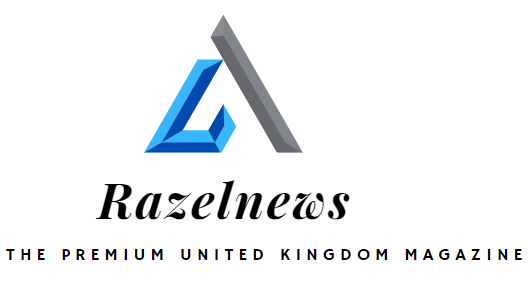Barrow, Alaska: A Glimpse into the Northernmost Community

Barrow, Alaska, now known as Utqiaġvik, is a unique and fascinating community located on the northernmost point of the United States. Situated within the Arctic Circle, this remote city offers a glimpse into a way of life shaped by extreme weather conditions, rich indigenous culture, and the challenges of living in one of the most remote regions on Earth.
Geography and Climate:
Barrow’s geographical location is extraordinary, with its northernmost point reaching into the Arctic Ocean. The city experiences the harsh conditions of an Arctic climate, with long, frigid winters and short, cool summers. The sun sets for the last time in November, plunging the region into a period of continuous darkness until the sun rises again in January, marking the beginning of the polar day.
Despite the challenging climate, Barrow’s natural surroundings are breathtaking. The region is home to vast expanses of tundra, dotted with lakes and rivers. The Arctic Ocean, with its ice-covered waters, plays a crucial role in the lives of the residents, influencing their daily activities and traditional practices.
Inuit Culture and Traditions:
The indigenous Iñupiaq people have called this region home for thousands of years, and their cultural heritage is deeply intertwined with the Arctic environment. Hunting and fishing are integral parts of their traditional lifestyle, providing sustenance and connecting them to the land and sea. Whaling, in particular, holds significant cultural importance, with the Iñupiaq relying on traditional methods to harvest whales for food and materials.
The Iñupiaq people celebrate their rich heritage through various cultural events, such as the Nalukataq festival. This festival, held in the summer, marks the successful whale harvest and is a time for the community to come together, sharing traditional dances, storytelling, and feasting.
The Impact of Climate Change:
Barrow is not only a witness to the effects of climate change but also a community actively grappling with its consequences. The Arctic region is warming at a rate nearly twice the global average, leading to the melting of sea ice, rising sea levels, and changes in wildlife patterns. These changes directly impact the traditional activities of the Iñupiaq people, challenging their way of life and necessitating adaptation strategies.
The city has become a focal point for climate scientists studying the impact of global warming on the Arctic. The Barrow Global Climate Change Research Facility, established by the National Oceanic and Atmospheric Administration (NOAA), plays a crucial role in monitoring climate patterns, sea ice conditions, and the overall health of the Arctic ecosystem.
Economic Activities and Infrastructure:
Barrow’s economy revolves around subsistence activities, such as hunting, fishing, and whaling, but there is also a growing reliance on wage-based employment. Government jobs, education, and healthcare services contribute significantly to the local economy. The city has modern amenities, including schools, a hospital, and communication infrastructure, but the challenges of its remote location make these services essential for the community’s well-being.
Tourism is another emerging sector in Barrow, with visitors attracted to the unique opportunity to experience life in the Arctic and witness the stunning natural beauty of the region. Cultural tours, wildlife excursions, and the chance to see the Northern Lights are among the attractions drawing adventurous travelers to this remote destination.
Preservation of the Arctic Environment:
As the global spotlight turns towards climate change and environmental conservation, Barrow plays a crucial role in highlighting the need to preserve the fragile Arctic ecosystem. The city’s residents, in collaboration with scientific institutions and environmental organizations, actively engage in initiatives to promote sustainability, protect wildlife habitats, and address the challenges posed by climate change.
Conclusion:
Barrow, Alaska, stands as a testament to the resilience of its people, the richness of indigenous culture, and the profound impact of climate change on our planet. This northernmost community offers a unique perspective on life in the Arctic, where traditional practices and modern challenges coexist. As the world grapples with the consequences of a changing climate, Barrow serves as a reminder of the urgent need for global collaboration to preserve the delicate balance of our planet’s ecosystems.
1. Where is Barrow, Alaska located?
- Barrow, now officially known as Utqiaġvik, is situated on the northernmost point of the United States in the state of Alaska. It is located within the Arctic Circle and overlooks the Arctic Ocean.
2. Why is Barrow now called Utqiaġvik?
- In 2016, the city officially changed its name from Barrow to Utqiaġvik, an Iñupiaq word meaning “place where we gather wild roots.” This change aimed to reclaim the indigenous heritage of the region.
3. What is the climate like in Barrow?
- Barrow experiences an Arctic climate characterized by long, cold winters and short, cool summers. The region is subject to extreme temperature variations, and it is in darkness for a continuous period during the winter, while the summer brings continuous daylight.
4. How do people in Barrow adapt to the extreme weather conditions?
- Residents of Barrow are accustomed to the harsh Arctic conditions and have developed various adaptation strategies. Traditional activities, such as hunting, fishing, and whaling, play a crucial role in their survival, and modern infrastructure supports their daily lives.
5. What is the significance of whaling in Barrow?
- Whaling holds immense cultural importance for the Iñupiaq people of Barrow. It is a traditional practice that provides not only food but also materials for crafting and spiritual significance. The successful harvest is celebrated annually during the Nalukataq festival.
6. How is Barrow affected by climate change?
- Barrow is witnessing the effects of climate change, including rising temperatures, melting sea ice, and changes in wildlife patterns. These changes impact traditional activities like hunting and fishing, necessitating adaptation strategies. The city has also become a focus for climate research due to its vulnerability to these changes.
7. What economic activities drive Barrow’s economy?
- The economy of Barrow is primarily driven by subsistence activities like hunting and fishing. Additionally, wage-based employment, particularly in government jobs, education, and healthcare services, contributes significantly. Tourism is an emerging sector, drawing visitors eager to experience life in the Arctic.
8. Is there a research facility in Barrow studying climate change?
- Yes, the Barrow Global Climate Change Research Facility, established by the National Oceanic and Atmospheric Administration (NOAA), is located in Barrow. It plays a crucial role in monitoring climate patterns, sea ice conditions, and the overall health of the Arctic ecosystem.
9. How can tourists experience Barrow’s unique environment?
- Tourists can explore Barrow through cultural tours, wildlife excursions, and opportunities to witness the Northern Lights. The city offers a chance to experience life in the Arctic, learn about indigenous cultures, and appreciate the stunning natural beauty of the region.
10. What initiatives are in place for the preservation of the Arctic environment in Barrow?
- Barrow residents, in collaboration with scientific institutions and environmental organizations, actively engage in initiatives to promote sustainability, protect wildlife habitats, and address the challenges posed by climate change. The community plays a crucial role in advocating for the preservation of the delicate Arctic ecosystem.
These FAQs provide a glimpse into the unique aspects of Barrow, Alaska, shedding light on its geography, culture, climate, and the challenges and adaptations of its resilient community.






